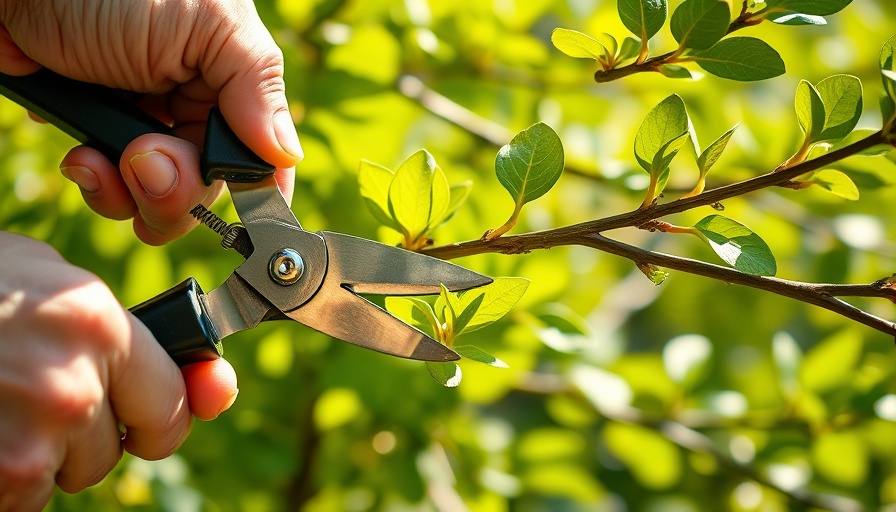
Pruning: A Spring Ritual for Tree Health
As the frost thaws and warmer days beckon, spring presents an ideal moment for homeowners to engage in an essential gardening task: tree pruning. Especially in Virginia, where diverse flora thrives, timely pruning serves as a key contributor to both tree vigor and your landscape's aesthetic appeal. Not all trees need the same attention, but several varieties benefit significantly from springtime snipping.
Why Prune Now? Enhancing Growth and Health
Spring is not just about blossoming flowers; it's also a rejuvenation period for trees. Like humans, trees need to shake off the winter ailments and prepare for an active growth season. Pruning assists in removing dead or diseased branches, preventing the spread of ailments which often blossom alongside new growth. Trees left unattended may encounter issues like crowding or overgrowth, leading to weak structures. Thus, removing superfluous branches not only encourages healthier growth but also shapes the tree’s visual framework.
Which Trees Should You Prune in Spring?
Identifying suitable species for spring pruning is critical. Popular choices include:
- Apple and Peach Trees: Ideal for pruning while still dormant; this encourages fruitful yields as new growth will follow.
- Cherry Trees: A light prune will help improve air circulation and sunlight exposure.
- Spring Blooming Shrubs: Wisteria and Virginia Creeper should be addressed soon after the final frost to maintain their health.
Guiding your pruning efforts based on the species' unique growth cycles aligns with their natural development, ensuring the best outcomes.
Tools of the Trade: How to Prune Effectively
Your approach to tree pruning can greatly impact the results. Prioritize investing in high-quality tools such as pruning shears, telescopic loppers for hard-to-reach areas, and saws for thicker branches. For example, the Spear & Jackson Razorsharp Telescopic Tree Pruner caters perfectly to those higher branches found on mature trees, ensuring that the cuts are clean and precise.
Remember to prioritize safety—wear gloves, eye protection, and when working at heights, consider using a harness for added security.
Pruning Techniques That Foster Growth
Understanding the proper techniques for tree pruning can further enhance your trees’ growth potential. Techniques such as thinning, reduction, and heading play crucial roles in sculpting a healthy tree structure. Aim to make cuts just outside the bark ridge to facilitate healing. Each technique aids in refining the tree's shape, and a proper understanding can greatly enhance the health of both ornamental and fruit-bearing trees.
Post-Pruning Care: Maintaining Tree Health
Once pruning is complete, post-care will help your trees recover. Consider watering and mulching the base, providing a nurturing environment. Additionally, disposing of pruned branches properly mitigates disease risks. This attention to detail post-pruning fosters positive growth outcomes.
Final Thoughts and Call to Action
Spring tree pruning is not just a task on your gardening list; it's an art form that enhances the beauty and health of your landscape. With a little planning and care, homeowners in Virginia can foster healthy and vibrant trees that beautify their property for years to come. If you're contemplating how to expand your living space or to upgrade your yard while ensuring tree health, consider the benefits of proper tree care. Take the leap and start pruning today, and watch your trees thrive!
 Add Row
Add Row  Add Element
Add Element 


 Add Row
Add Row  Add
Add 

Write A Comment